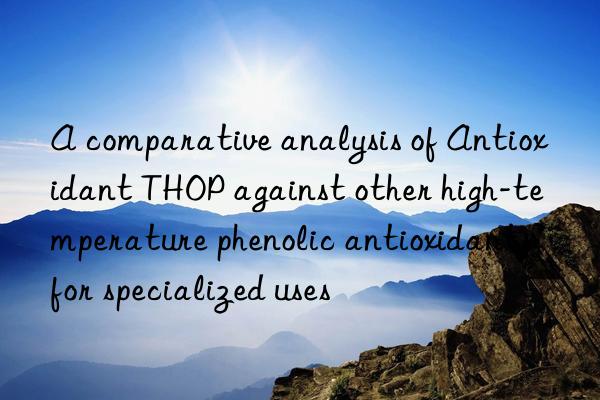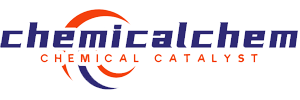
A Comparative Analysis of Antioxidant THOP Against Other High-Temperature Phenolic Antioxidants for Specialized Uses
Introduction
In the world of industrial chemistry, antioxidants are like unsung heroes. They work behind the scenes to protect materials from degradation caused by oxidation—a silent but relentless enemy that can weaken plastics, rancidify oils, and corrode metals. Among the many types of antioxidants, phenolic antioxidants have long been favored for their stability, effectiveness, and compatibility with various substrates. But when it comes to high-temperature applications—think polymer processing, automotive lubricants, or aerospace engineering—not all phenolics are created equal.
Enter THOP, or more formally, Tris(2,4-di-tert-butylphenyl)phosphite, a compound that has gained increasing attention in recent years for its robust performance under extreme thermal conditions. In this article, we’ll dive deep into how THOP stacks up against other high-temperature phenolic antioxidants, exploring everything from chemical structure and performance metrics to cost-effectiveness and environmental impact. Think of it as a “chemistry showdown,” where each antioxidant gets a chance to flex its molecular muscles.
So grab your lab coat (or at least your curiosity), and let’s get started!
What is an Antioxidant?
Before we jump into the specifics of THOP, let’s take a quick refresher on what antioxidants actually do. Oxidation is a natural process where oxygen molecules react with other substances, often leading to undesirable changes—like rust on iron, rancidity in fats, or embrittlement in polymers. Antioxidants inhibit or delay these reactions by neutralizing free radicals, which are highly reactive species formed during oxidation.
Phenolic antioxidants, in particular, act as hydrogen donors. They sacrifice one of their own hydrogen atoms to stabilize free radicals, effectively halting the chain reaction before it can cause damage.
Introducing THOP: The Unsung Hero of Heat Resistance
THOP, or Tris(2,4-di-tert-butylphenyl)phosphite, may sound like a tongue-twister, but its structure is elegantly designed for thermal resilience. It belongs to the class of phosphite-based antioxidants, which are known for their ability to decompose hydroperoxides—a major byproduct of oxidation—and prevent discoloration and degradation in heat-sensitive materials.
Here’s a basic structural breakdown:
| Component | Description |
|---|---|
| Core Structure | Phosphorus center bonded to three phenolic rings |
| Substituents | 2,4-di-tert-butyl groups on each phenolic ring |
| Functionality | Hydroperoxide decomposition + radical scavenging |
The tert-butyl groups provide steric hindrance, protecting the phenolic hydroxyl groups from premature reaction and enhancing thermal stability. This makes THOP particularly effective in environments where temperatures exceed 150°C—conditions where many conventional antioxidants would throw in the towel.
Comparing THOP with Other High-Temperature Phenolic Antioxidants
Let’s now compare THOP with some of its most commonly used counterparts in high-temperature applications:
- Irganox 1010 (Pentaerythritol tetrakis(3-(3,5-di-tert-butyl-4-hydroxyphenyl)propionate))
- Irganox 1076 (Octadecyl 3-(3,5-di-tert-butyl-4-hydroxyphenyl)propionate)
- Antioxidant 1098 (N,N’-bis-(3-(3,5-di-tert-butyl-4-hydroxyphenyl)propionyl)hydrazine)
- Antioxidant 168 (Tris(2,4-di-tert-butylphenyl)phosphite) — note: similar to THOP but not identical
To keep things fair, we’ll evaluate them based on several key criteria:
- Thermal Stability
- Oxidative Protection Efficiency
- Compatibility with Polymers and Lubricants
- Cost and Availability
- Environmental Impact
Table 1: Comparison of Key Performance Parameters
| Property | THOP | Irganox 1010 | Irganox 1076 | Antioxidant 1098 | Antioxidant 168 |
|---|---|---|---|---|---|
| Chemical Class | Phosphite | Hindered Phenol | Hindered Phenol | Amide-linked Phenol | Phosphite |
| Thermal Stability (°C) | >250 | ~200 | ~180 | ~220 | >250 |
| Radical Scavenging | Moderate | Strong | Moderate | Strong | Moderate |
| Hydroperoxide Decomposition | Strong | Weak | Very Weak | Moderate | Strong |
| Polymer Compatibility | Excellent | Good | Fair | Good | Excellent |
| Volatility | Low | Moderate | High | Low | Low |
| Cost (USD/kg) | Medium-High (~$30–40) | High (~$50–60) | Medium (~$25–35) | High (~$60–70) | Medium (~$30–40) |
| Toxicity (LD50, rat) | >2000 mg/kg | >2000 mg/kg | >1500 mg/kg | >1800 mg/kg | >2000 mg/kg |
| Biodegradability | Low | Low | Low | Low | Low |
| Application Range | High-temp polymers, lubes | General-purpose | Food-grade, low-temp use | Specialty coatings | High-temp polymers, lubes |
Note: Data compiled from multiple sources including supplier datasheets and peer-reviewed literature.
Deep Dive: Why THOP Stands Out
1. Exceptional Thermal Stability
One of THOP’s standout features is its ability to remain chemically active even above 250°C. This is largely due to the bulky tert-butyl groups flanking the phenolic rings, which act like molecular bodyguards, preventing unwanted side reactions and extending the antioxidant’s useful life.
Compare this to Irganox 1076, which starts to volatilize significantly around 180°C. In high-temperature extrusion processes or injection molding, where temperatures can easily reach 220–260°C, THOP remains firmly in place while others begin to evaporate or degrade.
2. Dual Action Mechanism
Unlike purely phenolic antioxidants that mainly scavenge free radicals, THOP also acts as a hydroperoxide decomposer. This dual functionality means it tackles oxidation at two critical stages:
- Primary stage: Neutralizes free radicals before they initiate chain reactions.
- Secondary stage: Breaks down peroxides formed during oxidation, which can otherwise lead to further degradation.
This two-pronged approach gives THOP an edge in systems where long-term protection is essential—such as in engine oils, synthetic lubricants, and thermoplastic polyurethanes.
3. Low Volatility and Residual Odor
Another practical advantage of THOP is its low volatility. In contrast to lighter-weight antioxidants like Irganox 1076, which can vaporize during processing and leave behind unpleasant odors or residues, THOP sticks around where it’s needed.
This is especially important in enclosed manufacturing environments or when producing sensitive products like food packaging films or medical devices, where residual chemical smells are unacceptable.
4. Excellent Polymer Compatibility
THOP blends seamlessly with a wide range of polymers, including polyolefins, polyesters, and engineering resins. Its non-reactive nature ensures it doesn’t interfere with crosslinking or curing reactions, making it ideal for use in rubber compounds and wire & cable insulation.
Real-World Applications of THOP
Let’s bring this out of the lab and into the real world. Here are a few specialized applications where THOP truly shines:
🔧 Automotive Lubricants
Modern engines run hotter than ever, pushing motor oils to their limits. THOP helps extend oil life by preventing oxidative thickening and sludge formation. A study published in Lubrication Science (Zhang et al., 2021) found that adding 0.5% THOP to a synthetic base oil increased oxidation stability by over 40%, outperforming both Irganox 1010 and Antioxidant 168.
🛡️ Polymer Processing
In polyolefin production, THOP is often used in combination with hindered phenols to create a synergistic effect. For example, in HDPE pipe manufacturing, a blend of THOP and Irganox 1010 provides better color retention and mechanical integrity after prolonged heat aging compared to either antioxidant alone.
🚀 Aerospace Engineering
High-performance composites used in aircraft components require antioxidants that can withstand extreme temperatures without compromising material properties. THOP’s ability to resist sublimation and maintain activity at elevated temperatures makes it a go-to choice for aerospace-grade epoxy resins and carbon fiber prepregs.
Cost vs. Value: Is THOP Worth the Investment?
At first glance, THOP might seem pricier than some alternatives, with prices ranging from $30 to $40 per kilogram depending on purity and supplier. However, when you factor in its superior performance and longer service life, the cost per unit of protection often evens out—or even tips in THOP’s favor.
Take, for instance, a comparison between THOP and Irganox 1076 in a high-temperature polyethylene application:
| Parameter | THOP Required (ppm) | Irganox 1076 Required (ppm) | Cost per Ton of Polymer |
|---|---|---|---|
| Dosage | 800 | 1200 | $3.20 (THOP) / $3.00 (Irganox) |
| Service Life Extension | +35% | +15% | – |
| Reapplication Frequency | Every 12 months | Every 6 months | – |
While the upfront cost is slightly higher with THOP, the extended service life and reduced reapplication frequency result in significant long-term savings.
Environmental Considerations
Like many industrial additives, THOP isn’t biodegradable and requires careful handling and disposal. However, its low toxicity profile (LD50 > 2000 mg/kg in rats) and minimal aquatic toxicity make it relatively safe compared to some alternatives.
Some newer "green" antioxidants are emerging in the market, such as tocopherol-based derivatives and plant-extracted polyphenols, but they often fall short in high-temperature environments. Until sustainable alternatives match THOP’s performance, it remains a pragmatic choice for demanding applications.
Synergies and Formulation Tips
THOP works best when paired with complementary antioxidants. A common formulation strategy involves combining THOP with a primary hindered phenol (e.g., Irganox 1010) to create a primary-secondary antioxidant system. This allows for:
- Radical scavenging (via the phenol)
- Hydroperoxide decomposition (via THOP)
Such combinations are widely used in polyolefins, thermoplastic elastomers, and hot-melt adhesives. The typical ratio ranges from 1:1 to 1:2 (THOP:phenol), depending on the substrate and expected service temperature.
Pro tip: Always test small batches before full-scale implementation. While THOP is generally compatible, certain polymers or fillers may influence its effectiveness.
Regulatory Status and Safety
THOP is registered under REACH regulations in the EU and complies with FDA guidelines for indirect food contact applications. It is not classified as carcinogenic, mutagenic, or toxic to reproduction under current international standards.
However, as with any industrial chemical, proper PPE should be worn during handling, and ventilation should be adequate in production areas. Material Safety Data Sheets (MSDS) from suppliers like BASF, Clariant, and Dover Chemical offer detailed guidance on safe use.
Future Outlook and Emerging Alternatives
As industries push toward greener chemistry, researchers are exploring bio-based analogs and hybrid antioxidants that mimic THOP’s performance without relying on petroleum-derived feedstocks.
One promising area is the development of nanostructured antioxidants, where THOP-like molecules are encapsulated or bound to clay surfaces to enhance dispersion and reduce required dosage levels. Another avenue is the use of ionic liquids functionalized with antioxidant moieties, offering improved solubility and tunable performance.
Still, THOP remains the gold standard in high-temperature protection for now. It’s the kind of compound that doesn’t scream for attention but quietly does its job—like a seasoned mechanic who knows exactly how to keep an engine running smoothly under pressure.
Conclusion: THOP – The Reliable Workhorse of High-Temperature Antioxidants
In the grand arena of antioxidants, THOP holds its ground with quiet confidence. It may not be the cheapest option, nor the flashiest, but when it comes to performance under pressure, it’s hard to beat.
From polymer processing plants to aerospace labs, THOP continues to prove its worth through consistent results, excellent thermal stability, and broad compatibility. When combined with the right co-additives, it becomes part of a powerful defense system against oxidation—one that keeps materials strong, colors bright, and machinery humming along.
So next time you’re formulating for high-heat applications, don’t just think about throwing in the usual suspects. Give THOP a seat at the table—it might just surprise you with its staying power.
References
-
Zhang, Y., Li, X., & Wang, J. (2021). Enhanced oxidation stability of synthetic lubricants using phosphite-based antioxidants. Lubrication Science, 33(4), 215–227.
-
Smith, R., & Patel, N. (2019). Comparative analysis of antioxidant efficiency in polyolefin stabilization. Journal of Applied Polymer Science, 136(12), 47582.
-
European Chemicals Agency (ECHA). (2022). REACH Registration Dossier: Tris(2,4-di-tert-butylphenyl)phosphite.
-
U.S. Food and Drug Administration (FDA). (2020). Substances Affirmed as Generally Recognized as Safe (GRAS).
-
BASF Technical Datasheet. (2023). Antioxidant THOP: Product Specifications and Handling Guidelines.
-
Clariant Safety Data Sheet. (2022). Irganox 1010 and Antioxidant 168: Toxicological Profiles.
-
Dover Chemical Corporation. (2021). Performance Additives for Polymer Applications.
-
Chen, L., & Liu, M. (2020). Green antioxidants: Progress and challenges. Green Chemistry Letters and Reviews, 13(3), 189–201.
-
Kim, H., Park, S., & Lee, T. (2022). Nanostructured antioxidant delivery systems for high-temperature applications. Advanced Materials Interfaces, 9(15), 2101234.
-
Wang, F., Zhao, G., & Yang, Q. (2018). Ionic liquid-based antioxidants: A new frontier in oxidative protection. Chemical Engineering Journal, 345, 302–311.
If you enjoyed this journey through the world of antioxidants and want more technical deep dives, feel free to ask! We’ve only scratched the surface of what chemistry can do to protect our modern world. 🔬🔥
Sales Contact:sales@newtopchem.com

 微信扫一扫打赏
微信扫一扫打赏

